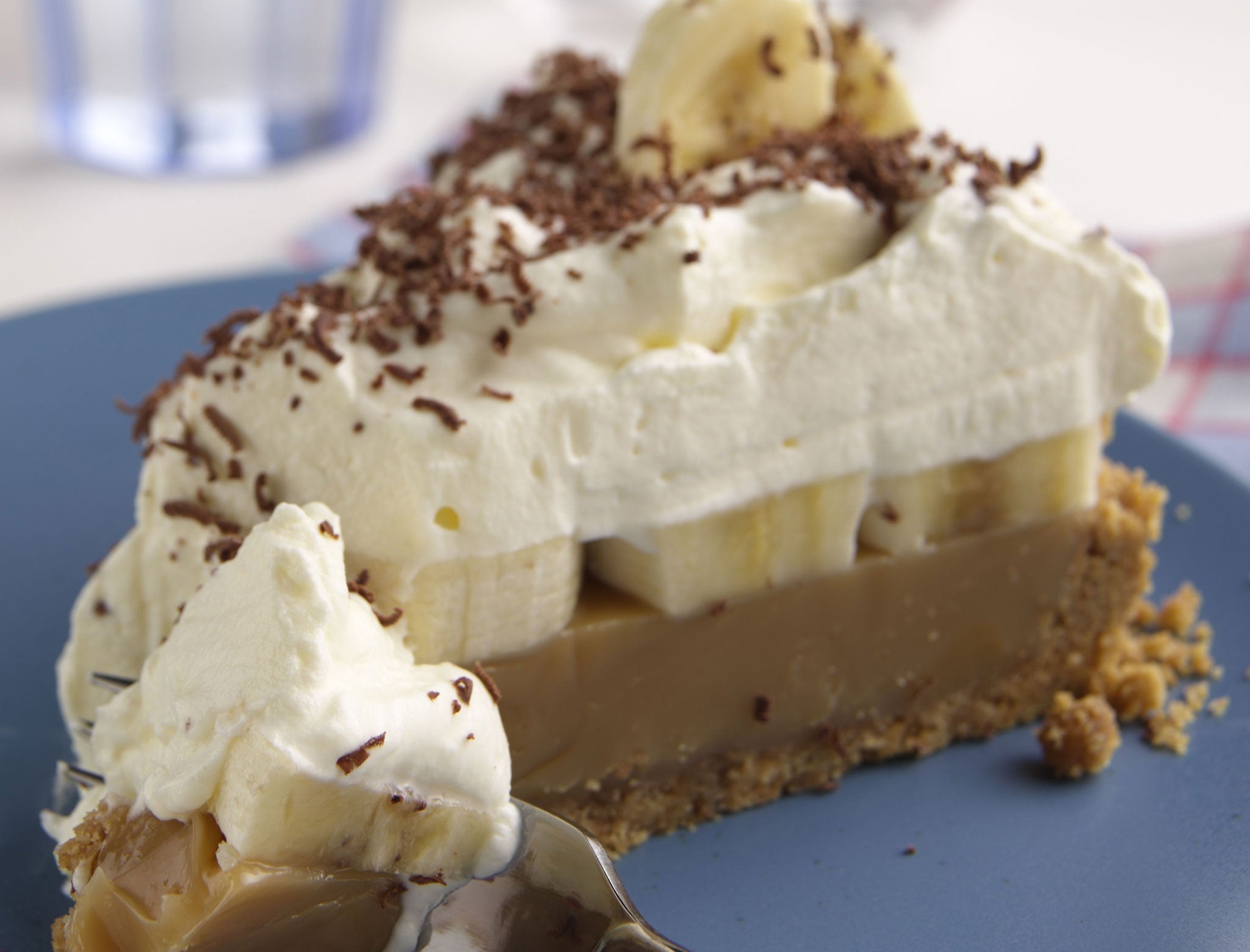Nigel Mackenzie: Restaurateur who stumbled upon a culinary sensation when he invented the banoffee pie in 1971
Soon customers were ringing from London to check it was still on the menu

Nigel Mackenzie was the British restaurateur behind the banoffee pie – a dessert created in 1972 out of necessity rather than by design.
In 1968 the newly-wed Mackenzie and his wife, Sue Kenrick, bought a tea room in a 16th-century building in Jevington, East Sussex, formerly inhabited by monks, and spent six months renovating and converting it into a fashionable restaurant, The Hungry Monk.
In 1971, they found themselves one dessert short for their menu and so head chef, Ian Dowding, suggested a recipe he had brought back from a trip to America called Blum’s Coffee Toffee Pie. As with anything new, Mackenzie was enthusiastic and the pair set about preparing the pastry-clad pudding made with boiled condensed milk, caramel and cream. After a few experiments to try and perk it up a little with fruit, including apples, mandarins and oranges, Mackenzie suggested bananas – and Dowding recalled, “Straight away we knew we had a winner.”
Once perfected, Sue enquired as to its name. Mackenzie ruminated for a time and then named the pudding “Signor Banoffi’s pie” to try and create some intrigue.
The response from the Hungry Monk’s clients was instant. Soon customers were ringing from London to check that it was still on the menu before they set out. The pudding’s fame spread to other restaurants and became a permanent fixture on the menu. It was helped further when Nestlé printed the recipe on the side of Carnation condensed-milk cans.
With supermarkets creating their own variants, Mackenzie found himself agitated by some the imitators, particularly those who used “that horrible cream in aerosol cans” instead of lightly whipped double cream, and those who ventured away from short-crust pastry to crushed digestive biscuits. At his memorial service, his son said, “If you ever make it with a biscuit base, expect a lightning strike from above.”
In 1974, the recipe appeared in their recipe book, The Deeper Secrets of the Hungry Monk, which sold over 100,000 copies, and the pudding took the world by storm, even gaining official recognition in the Oxford English Dictionary in 1997 and received a historical blue plaque on the building recognising the achievement.
Born in London in early 1944, Nigel Andrew Mackenzie was the son of a chairman of Unilever and the artist Valerie Mackenzie. After leaving school, he joined Unilever as a management trainee. However, after a short spell – in which Mackenzie oversaw the creation of Birds Eye crispy cod balls – he decided that being his own boss would allow him the space and creativity he craved to experiment in the kitchen.
In addition to their restaurant, the Mackenzies ran a cookery shop, a Rolls-Royce hire business and were involved in the Enterprise Centre in nearby Eastbourne. The couple also ran the charity Rainbow Children’s Holidays for 21 years, which provided holidays in the country for underprivileged city children.
Nigel Mackenzie, restaurateur and entrepreneur: born London 14 April 1944; married 1966 Sue 1966 (two children); died Lewes, East Sussex 29 May 2015.
Join our commenting forum
Join thought-provoking conversations, follow other Independent readers and see their replies
Comments